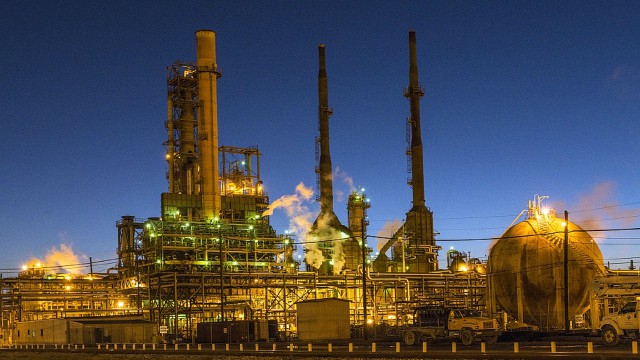The last few months have been tough for investors in beaten-down oil sands operator Pengrowth Energy (TSX:PGF). The company, which once stood on the brink of failure when crude plummeted to under US$30 a barrel, has made considerable steps to ensuring its future by shoring up its balance sheet and growing production from its flagship Lindbergh thermal oil operation.
Nonetheless, oil’s recent collapse, where the North American benchmark West Texas Intermediate (WTI) plunged to under US$45 per barrel, saw the market heavily mark down its stock. Over the last three months, Pengrowth lost 21%, creating an opportunity for contrarian risk-tolerant investors to gain exposure to a company that is poised to soar as oil rallies higher.
Improved financial position
Key to Pengrowth’s survival has been its ability to strengthen its balance sheet by substantially reducing debt. By the end of the third quarter 2018, the driller’s debt had fallen to a manageable $672 million with $158 million borrowed from a revolving credit facility and the remainder in the form of term notes.
Importantly, there are no major debt repayments due until next year when $122 million of term notes matures. This gives Pengrowth the opportunity to build up its cash reserves as it benefits from firmer crude.
Growing profitability
Industry analysts estimate that WTI could rally to as high as US$65 a barrel during 2019, as OPEC as well as Russian production cuts help to rebalance global energy markets. That would be a boon for Pengrowth, because Lindbergh is a low-cost asset to operate reporting third-quarter operating expenses of $11.02 per barrel produced, which was an impressive 31% lower than a year earlier. Its profitability is further underscored by Pengrowth’s breakeven costs of US$46 per barrel. That means in the current environment the company is generating cash flow from every barrel produced.
The efficiency of the Lindbergh operation is also improving. For the third quarter, it reported a steam-to-oil ratio (SOR) of 2.99 compared to 3.22 for the same quarter in 2017. That low ratio indicates that operating costs will remain low. It is also well below the SOR of other oil sands steam-assisted-gravity-drainage (SAGD) assets, which have an industry average of 3.9, highlighting the quality of the Lindbergh operation.
While Pengrowth is forecasting that overall 2019 production growth will remain when compared to 2018, Lindbergh’s bitumen output will grow by up to 10% to 18,250 barrels daily, which bodes well for higher earnings. The company is also forecasting that costs will fall with it, expecting adjusted operating expenses of $9.25-10 per barrel produced, which, at the upper end, is 13% lower than 2018, while general and administrative expenses will fall by up to a healthy 29% to $2.50-2.75 a barrel.
This means that Pengrowth is well positioned to weather weaker WTI prices, while its profitability will grow at a solid clip if oil rallies higher, which many analysts are expecting.
Is it time to buy Pengrowth?
Pengrowth is a risky investment, which is highly dependent on higher oil, particularly WTI reaching US$60 a barrel, if it is to be profitable. There are, however, a recent range of events that bode well for the company’s performance in 2019.
Key among these is the significantly lower differential between WCS and WTI, which means that even if WTI remains weak and hovers at around US$55 a barrel for the remainder of 2019, Pengrowth’s earnings will grow. When this is coupled with lower expenses and the promising outlook for crude, Pengrowth’s earnings and cash flow should expand at a healthy rate, allowing it to pay pending debt maturities while giving its stock a solid lift.







